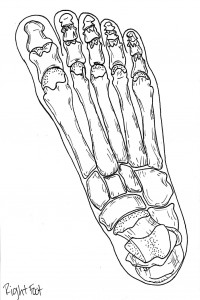How does it happen? It was 11:30 and I was going to look up one thing on the web and now it is 12:40 and I feel as if I have just emerged from a long journey (a little physically dazed) through multiple worlds linked by my ongoing curiosity. It’s that “I’ll just follow this thread” that takes me down the hole. Because in the genius of the webbing is the linking to another and another and another evermore tantalizing bit that catches my attention. (Fortunately I was not enticed to buy anything in the process!) I have practiced this paying attention so rigorously that it works and it’s fun and energizing and……It’s like when I’m hiking or kayaking or skiing and I just have to go to the next rise, around the next bend to that clump of trees, because there might be something there that I would miss otherwise—the experience of doing it. It also is what moves me onward doing my Mindful Moving practice–a particular sensation, an idea born out of moving, a “what if” question. Interesting that one of the threads I was following this morning was inactivity research and and its relationship to mitochondrial function.
-Sherry

